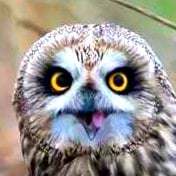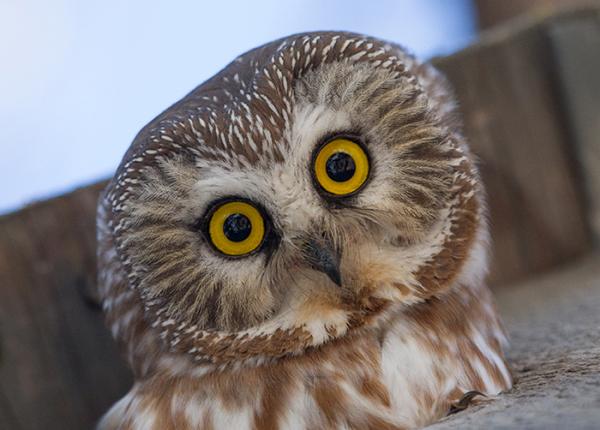- cross-posted to:
- dogs@lemmy.world
- animalswithjobs@lemmy.world
- cross-posted to:
- dogs@lemmy.world
- animalswithjobs@lemmy.world
So, I have been reading What an Owl Knows- and in reading the section about how to locate owls, one of the new methods is using the equivalent of a truffle pig, a dog trained to sniff out owl pellets.
It was amazing learning all the time and money researchers could save trying to track owls by sight and sound, when a dog can just sniff a path right to where they hang out. I read all about the team of Max and Jennifer Hartman in the book, and I found articles and podcasts, etc. all about them. But in having all of this stuff going back years to read and listen to, that means time has passed. And, unfortunately, I learned that time had passed for Max as well.
Max’s work lives on though, and many new dogs are going forward where Max was unable. Jennifer, and the other people and dogs at Rogue Detection Teams is still doing all kinds of work that would be difficult or impossible for humans to do alone. The dogs have searched out pangolins, wolves, cheetahs, orcas, spotted owls, Sierra Nevada red foxes, coastal martens, endangered butterfly larvae, bumblebee nests, and many other endangered species around the world.
I’ll share the first NPR interviews I saw about the owl dogs, and also I came upon Jennifer’s eulogy for Max. There is also the Rogue Detection Team YouTube Channel with long videos explaining all they do, and some shorter, species specific videos, so if you have questions or just want to see the dogs in action, that should have you covered.
NPR: Dec 2010 - Cheaper Way To Find Spotted Owls: Dogs?
Biologists use that hoot to track where the endangered birds live. But there’s a problem. The owls are getting quieter. And that makes the already expensive process of finding them even more costly. Reporter Amelia Templeton visited researchers from the University of Washington who say they have found a better, cheaper way of tracking owls.
Wasser says the detection dogs can even track two different species at the same time. And that’s why he’s training them to search for owl pellets. Turns out the spotted owl is in the middle of a turf war…with another owl. Lyle Lewis is with the US Fish and Wildlife service in California. He says these days aggressive Barred Owls are showing up in the Trinity National Forest. And hooting can get a Spotted Owl into trouble.
Lyle Lewis: “In some cases barred owls may actually run them off. And even though its rare, there have been documented mortalities of spotted owls being killed by barred owls”
So the spotted owl has a new problem. If it hoots, it might get whacked by a bigger owl. If it stays quiet, it might not be counted by biologists and could lose its real estate to logging. That’s why the US Fish and Wildlife Service also has a budget problem. Lyle Lewis says now that spotted owls are quieter, it takes much more surveying to find the same birds.
Lyle Lewis: “Its more expensive to get the required amount of surveys to determine whether the owls are there or not.”
And we’re talking about a lot of money. The state of Oregon alone spends about a million dollars a year tracking about 100 spotted owls that nest in state forests. That’s about 10 thousand dollars per owl every year. And quieter owls could double that cost. Lewis says the detection dogs need to go through more tests. But he thinks they make surveying much quicker, and bring down the cost.
Really great introduction to this new methodology and I highly recommend you read this interview. It’s also in audio form on that link too, if you’d rather listen to it.
Lonely Conservationists: Nov 2020 - Tribute to Max
I am coming up on my 15 year marker working in the field of conservation > biology, surveying for sensitive species all over the world. The work has been gruelling and gritty and for those of us in this field, it is often a solitary toil.
But for me, I have never felt particularly lonely or alone working in the field … until recently. Conducting field work suited my introvertish love of the natural world. I have to admit though, I was not completely alone. There was Max, my “co-woofer” and conservation detection dog. These smart, energetic canines are much more than essential “equipment” in this work – they are teachers, companions, confidantes, and our best friends.
Max was a spunky, white-whiskered, paper-eating, sweet natured rascal. He was also obsessed with playing fetch, a requirement for all of the Rogue Detection Teams (RDT) dogs. RDT is a conservation detection dog program currently with sixteen fetch-obsessed, high energy detection dogs, all rescued from shelters or as owner releases. We work with the dogs to be scent detectors of scat, toxins, plants, or other animals, and then deploy them on projects with their bounders (handlers) to locate specific data. My dogs and I have surveyed for species as diverse as African lion and cheetah, pangolin, storm petrel, wolf and cougar, and even orca (yes, orca scat floats, if just for a little while). I’ve lived in bush camps with chatty hyenas as neighbours, backpacked through the stunning backcountry of places like Yosemite National Park, slept in jungle hammocks in Cambodia, battled blood sucking leeches in Vietnam, and taken all means of travel, from helicopters, snow mobiles and rickety boats to arrive at remote field destinations to survey for cryptic odours.
When I first met Max, I was a new trainee on what was supposed to be a temporary 4-month summer research study to survey for northern spotted owls in California using scent detection dogs. The goal of the work was to learn about habitat use of the owls by collecting pellets that the dogs detected. What I soon came to understand and what Max taught me from day one, is that a dog handler (or bounders as we call ourselves at Rogues), is much more than just a person in the field with the canine. Max understood in his very nature that for us to work together, we needed to have a bond. He was not a “tool” to be handled, and as such, I was not a dog handler. Rather, Max taught me what it was to become a bounder. For the methodology to work we need to be bound to one another for a common goal, to seek out data on cryptic species, yes, but also to be bound by love.
I understand if you don’t want to read a dog eulogy, but there is good history of Jennifer’s work with Max and more detail about how that work is done. It is touching though, and full of great info as well. If you can handle it, I encourage you to read this full link.


Yes, Max was a blue heeler, and it looks like they have a few other heelers on the team. I haven’t come across if there’s a special reason they have heelers, but they do have some other types of dogs as well. Their team page lists all the shelters they were adopted from, so I don’t if the people who run it just particularly enjoy them or what.
We have a heeler too! They might be good for this task because they are very smart and trainable and they’re rugged dogs, good in lots of environments.
This is such a cool share!
I’ve met some really cool heelers over the years. I think they’re really nice looking dogs.
I’m glad I could get multiple interests in one go for you. If you haven’t checked out the links yet, you should. I try to sum everything up for you guys, but sometimes there’s just too much good stuff and I want you to see where it came from, and this is definitely one of those times.
From this video, they say:
“We adopt shelter dogs who love to play fetch and teach them to sniff for a variety of odors in the wild. … we make it a game for our detection dogs. They love nothing more than sniffing for solutions to help wildlife. #LifelsABall”
Heelers definitely fit the bill! The dog my family had when I was born was part heeler. Absolutely one of the best dogs I’ve known